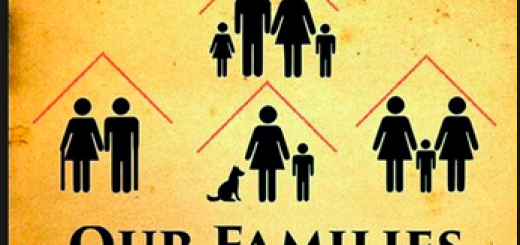Was it a stab in the dark on India’s Aam aadmai? dr. james kottoor

Notes ban: demonetization!
 Yes Modiji’s currency reform was projected as ‘the magic wand that can eliminate all economic and moral ills, including corruption, counterfeits, black money and terror funding’. The writer Sunitha Natti exposes what really happened: the economic damage Demo inflicted. In one sentence it crushed the cash-dependent Aam aadmi.
Yes Modiji’s currency reform was projected as ‘the magic wand that can eliminate all economic and moral ills, including corruption, counterfeits, black money and terror funding’. The writer Sunitha Natti exposes what really happened: the economic damage Demo inflicted. In one sentence it crushed the cash-dependent Aam aadmi.
He lists facts one after another in various sectors where economic damage demo inflicted due to which the country is sliding down, not making progress: 1. government hinted that a third of the Rs 15.44 lakh crore extinguished cash wouldn't return, but by mid-December 2016, nearly 80 per cent high-value notes returned, lending credence to the argument that demo was doomed from the start; 2. cement production, one of the key indicators of construction sector, contracted by 13.3 per cent in January. 3. Commercial vehicles' sales, an indicator of transportation activity, contracted in December, while passenger vehicle sales (significantly two-wheelers) decelerated in November and December;
4. Fruits and vegetables are more often bought in cash, and as cash ran dry, demand compressed which, hit farmers and sellers, some of whom are yet to recover; 5. Private investments, already dismal, worsened after demo and are yet to rebound. Last quarter, it touched a 13-year low; 6. GDP, as predicted by Dr Manmohan Singh dropped 2 per cent; 7. growth fell with a giant thud in the first quarter at 5.6 per cent; 8. In August, RBI data showed that 99 per cent of the invalidated currency returned, further confirming demo as a failure; 9. In the absence of tangible data, any commentary is akin to stabs in the dark, the writer concludes.
With the best of intentions even the wisest of humans can make the worst mistakes for a short time. One full year is not a short time to learn from mistakes. If the one responsible still doggedly continues saying “the tiger I let loose has two hones” it is clear sign he has neither honesty, nor humility but is blinded by arrogance. It is high time for the whole country to wake up and force the government to do necessary course correction or to quit, to save the Aam aadmi who suffered and cooperated for one full year! james kottoor, editor ccv.
Please read below Natti’s article on Notes Ban
Notes ban: It’s all a stab in the dark – Sunitha Natti, Published: in The New Indian Express, 09th November 2017
If there's one question that's bothering India's 1.25 crore aam janta today, it's this: Why demonetisation?
Exactly a year later, demo remains just how it began — a mystery. It's tempting to think fictitious geniuses like Sherlock Holmes or perhaps our hometown hero Byomkesh Bakshiare real and here to solve the puzzling drama.
If they crack it, the story may end up on the silver screen and potentially break box-office records. Much like the blockbuster movie Baahubali or the popular HBO TV series Game of Thrones, the entire world will be its audience eagerly waiting and badly wanting to know what demo delivered.
Here’s the plot. On November 8, 2016, in an unscheduled televised appearance, Prime Minister Narendra Modi invalidated Rs 500 and Rs 1,000 notes overnight.
The slapdash currency reform was projected as the magic wand that can eliminate all economic and moral ills, including corruption, counterfeits, black money and terror funding.
In the weeks and months that followed, citizens regrouped, by design or default, into three camps namely proponents, opponents, and floaters. Critics, by nature, billowed out snap judgements trashing noteban from day one, while those in favour refused to see the economic damage demo inflicted. Floaters, the last and the largest category comprising aam janta, teetered between strong logic and propaganda, but are still awaiting the final word that's yet to be spoken.
As Union Minister Jayant Sinha pointed out, revolutionary moves like demo, require time to evaluate. While the NDA uses time as a tool and letting time do its job, below are some pointers to help shape your verdict.
Critics’ view: Why it failed?
Demo had a little something to annoy everyone, and the cash-dependent ordinary folk the most. But the common man needed no amount of convincing, as they readily bought Modi's vision to cleanse the system and willingly weathered the storm of severe cash shortage. The government hinted that a third of the Rs 15.44 lakh crore extinguished cash wouldn't return, but by mid-December 2016, nearly 80 per cent high-value notes returned, lending credence to the argument that demo was doomed from the start.
Other metrics soon joined the sorry parade of falling economic indicators. Organized manufacturing was adversely affected, FMCG sales declined as demo pinched disposal incomes. In December, 2016, services PMI contracted for the first time since June, 2015 , while cement production, one of the key indicators of construction sector, contracted by 13.3 per cent in January. Commercial vehicles' sales, an indicator of transportation activity, contracted in December, while passenger vehicle sales (significantly two-wheelers) decelerated in November and December.
Vegetable prices fall every winter, but thanks to demo, food inflation fell 240 bps between October, 2016 and January, 2017. Fruits and vegetables are more often bought in cash, and as cash ran dry, demand compressed. This, in turn, hit farmers and sellers, some of whom are yet to recover.
Private investments, already dismal, worsened after demo and are yet to rebound. Last quarter, it touched a 13-year low. Capacity utilisation stood at 71 per cent, and until it bumps up another 10 bps, fresh investments are both unlikely and undesirable.
Conservative economists warned of short and long-term impact on GDP, including former Prime Minister Dr Manmohan Singh who projected a 2 per cent dent. The knock-on effect visibly pulled down growth, yet the government maintained it was only transitory.
That even the RBI misjudged the extent of demo impact on GDP was evident from its growth projections. In December, 2016 — just a month into demo — the central bank estimated demo impact on FY17 GVA growth to be a mere, hold your breath, 15 bps! Though it later revised FY17 growth rate downwards by 70 bps to 6.9 per cent, a lot of it was attributed to loss of momentum.
RBI hoped remonetisation will strengthen growth in Q4 to 6.5 per cent, but the CSO estimate undershot its projection once again, and this time, by a staggering 90 bps. Reason: The projected acceleration in agriculture did not materialize, output from allied activities slowed more than expected, investment-driven boost to electricity generation and mining and quarrying was belied and construction activity weakened.
In its April review, embracing optimism, RBI expected a pick-up in growth citing several factors. First, discretionary demand was to bounce back. So was economic activity in cash-intensive sectors like retail, hotels and restaurants. But much to everyone's disappointment, growth fell with a giant thud in the first quarter at 5.6 per cent. Still, officials reasoned that a slowdown set in as early as the first quarter of FY17. It’s baffling that none saw it coming (or rather not cared to highlight it) for an entire fiscal until the situation worsened. Theoretically, when growth slows, mistakes are made or avoided. And in India’s case, the latter appears to have happened, thanks to a blunt tool called demo.
Proponents' view: How demo worked?
As widely acknowledged, as little as 6 per cent of all illicit money comprises cash (rest is in physical assets). This is reaffirmed when the government’s earlier income declaration scheme yielded a piffling Rs 6,500 crore, while black stash is estimated upwards of Rs 1.4 lakh crore. In August, RBI data showed that 99 per cent of the invalidated currency returned, further confirming demo as a failure. But there's a twist in every plot and for the blackmoney angle, it’s this: According to the Ministry of Corporate Affairs, officials probed 35,000 companies and 58,000 accounts deemed suspicious, where Rs 17,000 crore was deposited and withdrawn after demo. Officials suspect it as a possible tax fraud by shell companies and struck down 2.97 lakh firms, besides disqualifying over 3 lakh directors.
It’s also folly to think banks’ job ended with deposit collection. In fact, their work began immediately after demo, when various government agencies started scrutinizing deposits data and the exercise is ongoing as we speak.
The forced cash deposits also increased tax compliance with the taxpayer base jumping 45 per cent in FY17 as against 25 per cent in FY16. Some Rs 3-4.2 lakh crore is ‘unexplained’ cash and some 18 lakh notices were sent to assessees.
The first and only visible upshot of demo is increase in cashless transactions. Though overall digital transactions dipped once cash returned to the economy, it however, resulted in a significant rise in digital payments at Rs 50,000 crore in October, 2017, up 41 per cent over last year. The increasing dependency on paperless cash also reduced our cash-to-GDP ratio to 8.3 per cent in FY17 from about 12 per cent in FY16. Importantly, in nominal terms, currency with the public is now back to 90 per cent of pre-demo levels. It means, there was indeed an excess currency in circulation, which now stands corrected.
Surplus liquidity lowered deposit and lending rates. The weighted average lending rate for fresh loans fell 56 bps between November and February, while the one-year median MCLR reduced by 70 bps — even when repo rate was unchanged. This is significant, considering that the one-year median MCLR declined by just 15 bps during the preceding seven months (April-Oct, 2016) when repo was cut by 50 bps.
Lastly, the move was considered essential to combat graft and terrorism, often funded with cash or counterfeits. From 195,000 pieces in FY08, counterfeits shot up to 632,000 pieces in FY16 – a large proportion of which was thought to be coming from Pakistan. The proportion of Rs 500 and Rs 1,000 fake notes to the total counterfeits shot up to 41.34 and 22 per cent in FY16 respectively.
In July 2008, when a large number of counterfeits were detected at one of the RBI’s currency chests in Dumariaganj, UP, authorities were baffled that spotting a fake from the real proved a challenge. While critics are quick to write off demo as a failure considering 99 per cent extinguished cash returned to the system, it raises questions about the prevalence of fake notes in circulation. This is bugging RBI too, which is still weeding out counterfeits using 66 Sophisticated Currency Verification and Processing machines. So expect future corrections in the actual number of counterfeits.
What's your take?
India hasn't faced such a situation where one government's dogged will is to reform risking growth. What happens over the next few months will determine not only Modi's political future, but also his legacy. Critics termed demo an outlandish fairytale that cost the country a fiscal. But as German philosopher Friedrich Engels in the recent French movie The Young Karl Marx notes: Criticism devours on everything and when nothing's left, it devours on itself.
This seems apt in the present context. For instance, when India's ease of Doing Business ranking barely inched up one position last year, critics trashed authorities for doing so little. This year, when India jumped 30 spots, they questioned the relevance of World Bank ranking in the overall scheme of things.
In the absence of tangible data, any commentary is akin to stabs in the dark. The onus, though, is clearly on the government to provide clarity. Until it does, to use Bob Dylan's track, "The answer, my friend, is blowin’ in the wind. The answer is blowin’ in the wind". (Sunitha Natti is Senior Assistant Editor (Business), The New Indian Express and Non-Resident Fellow, University of Central Florida.
















